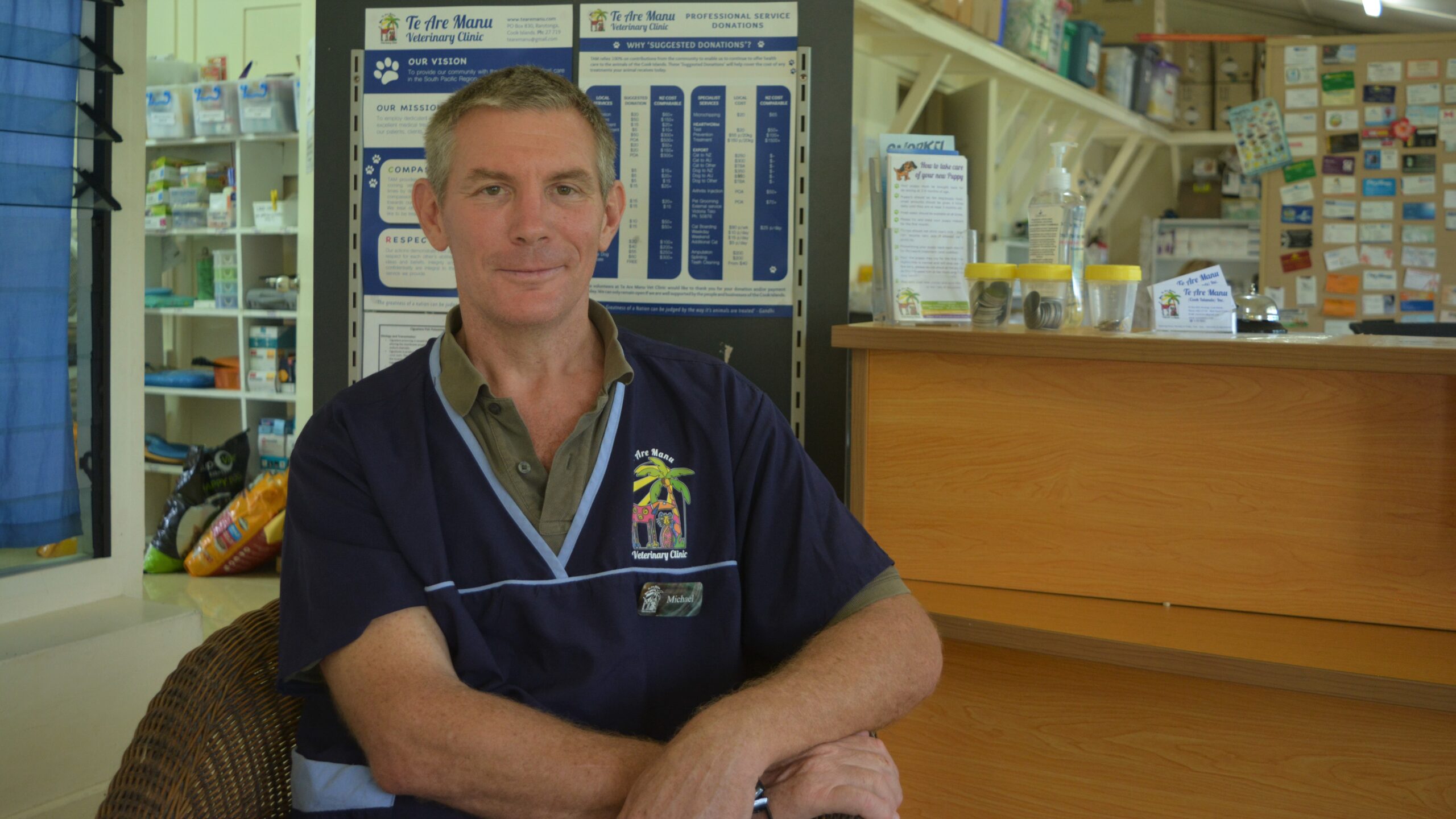Dr Michael Baer: The dogs of war
Wednesday 26 April 2023 | Written by Supplied | Published in Editorials, Local, National, Opinion

Dr Michael Baer is the main vet at Te Are Manu. Photo: Sian Solomon/22051332
With ANZAC day marked yesterday and poppies everywhere, has anyone noticed that some of the poppies are purple? Purple poppies celebrate the animals who have served in almost every human conflict in history, writes Dr Michael Baer, Te Are Manu Vet Clinic medical director.
Horses, donkeys, mules, and oxen were used as transport and supply. Elephants and camels carried packs and troops into battle, pigs were set on fire to scare the elephants. Some army careers are more prestigious than others, I suppose. Pigeons were used to transport messages.
And there have been some hairbrained schemes to use animals as remote bombs, like the idea of using trained dolphins as torpedoes or dogs with explosives strapped to their backs to blow up tanks. Because the USSR trained the dogs to recognise their own tanks and not the German ones, the dog programme was a bit of a failure. And although dolphins are still used, it is to find mines and enemy divers, not as swimming bombs.
A dog’s sense of smell, a horse’s strength and speed, an elephant’s size and a dolphin’s sonar are all superhuman. And it is no wonder that throughout history, armies have tried everything they can to harness that superhuman ability. And some of those superhumans have become superheroes.
The idea that bravery of animals in war was notable and worthy of recognition is almost as ancient as the use animals in war. Alexander the Great rode Bucephalus to conquer the ancient empires of Europe and Asia. Julius Caesar had Genitor, a horse with toes on his feet. The Mongol Empire had special laws protecting brave horses in retirement. And today our animal heroes are recognised with the Dickin Medal.
Dogs, horses and pigeons dominate the award, which makes sense as the award was instituted during World War II, when most armies were mechanised. Pigeons are unlikely to be awarded any more medals, satellite phones, radios and the internet have largely replaced carrier pigeons in most modern armed forces. Horses have been replaced by tanks and APC’s, trucks and helicopters. But dogs are used; and are still winning Dickin Medals.
The most recent recipient I can find is a dog, named Bass. He worked in the US Marines, detecting mines, controlling crowds and tracking people. During a battle he found four booby traps which saved many lives.
And I will always have a soft spot for Simon, the only cat to win the award. Simon is an anomaly, he was a stowaway on a naval vessel on the Yangtse River. After the ship was attacked and then became stranded, they faced a rat plague. Simon rose to the occasion; despite being wounded in the initial attack. The rats were vicious, several crew members were attacked, and supplies of food were sparse. Simon was not deterred and protected the crew and their food. He received a promotion to Able Seaman, and a Dickin Medal.




















































